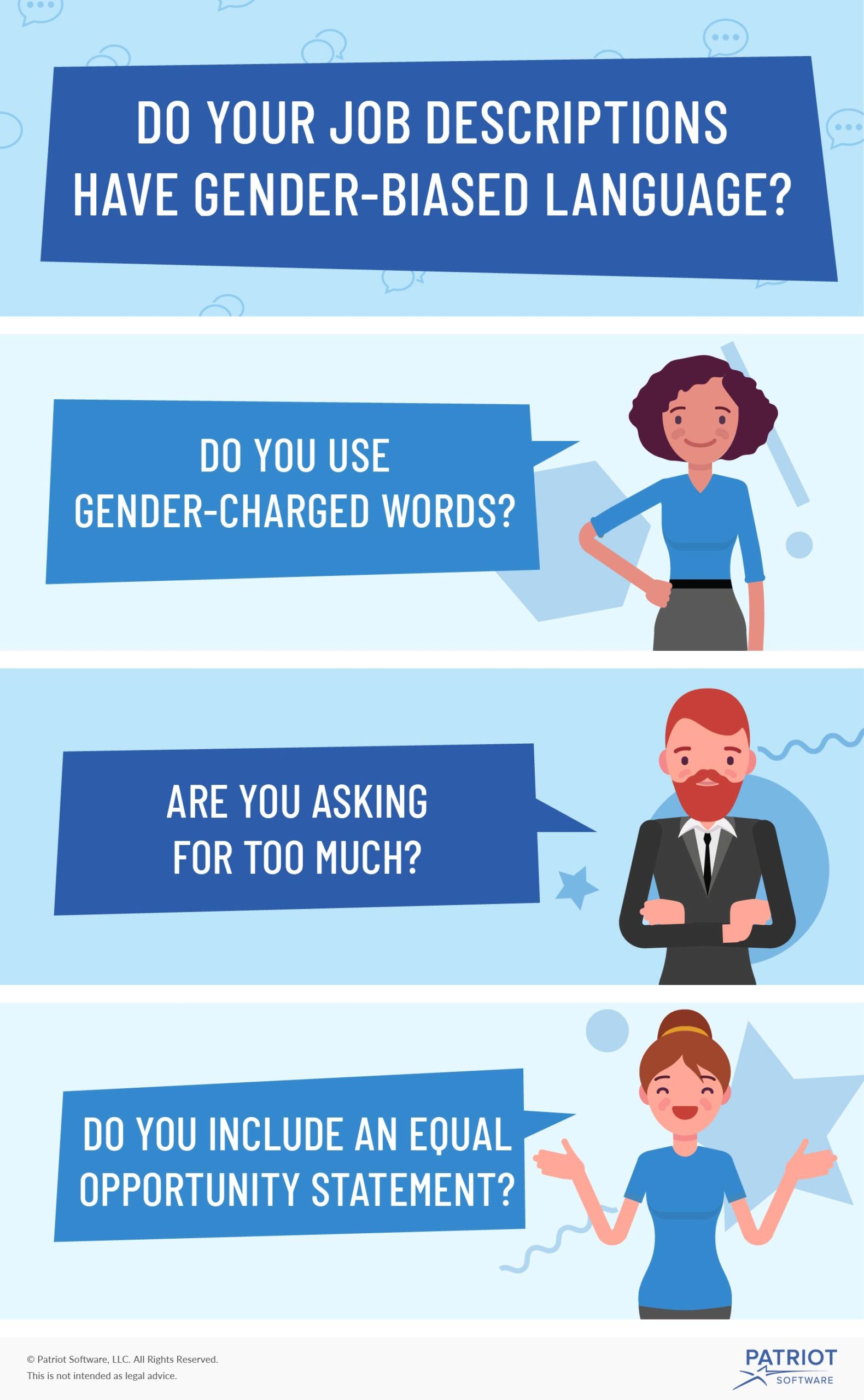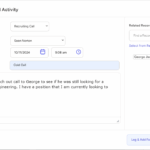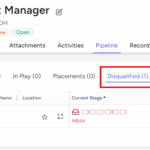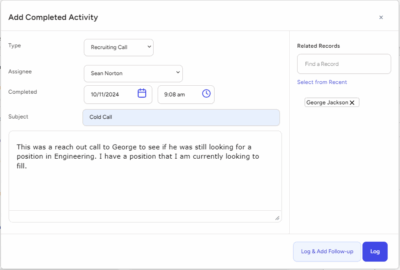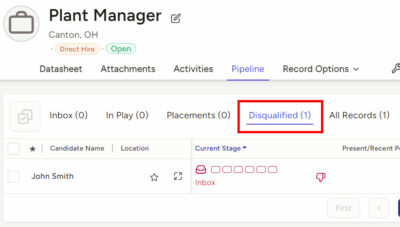The hiring process needs to be devoid of discrimination, beginning with the job description that you or your client write. Some hiring authorities unintentionally craft biased job posts toward a specific gender. Do your job descriptions contain gender-biased language?
Including gender-biased words in your job descriptions could cause you to lose out on great candidates. If you want a balanced applicant pool of both female and male candidates, determine whether gender-biased language is in your job postings.
What is gender bias in hiring?
Gender bias, or discrimination, in hiring is selecting a candidate based on their sex rather than qualifications. Hiring authorities who discriminate against an applicant based on their gender may treat them less fairly during the resume screening and interview processes.
Under the Equal Employment Opportunity Commission (EEOC), employers and employment agencies cannot discriminate against candidates based on their gender.
Although the EEOC prevents hiring authorities from openly including gender discrimination in the job description, gender-biased words can still sneak into the posting.
Do your job descriptions have gender-biased language?
If your job description is biased toward a specific gender, you may only see that gender applying, which can limit your candidate pool and diversity in your client’s company.
Limiting your applicant pool can drastically influence which candidate your client hires. According to one Harvard Business Review (HBR) study, the likelihood of hiring a female candidate depends on how many women are in the applicant pool.
The HBR study found that if there is only one woman candidate, the chances of her being hired are 0%. On the other hand, if there are two women candidates, the chances of placing a woman candidate increase to 50%.
If you want to avoid limiting your applicant pool, start by analyzing your job descriptions. To determine whether your job descriptions contain gender-biased language, consider the following three questions.
1. Do you use gender-charged words?
Word association is inevitable. Some words can conjure up other words, images, and feelings. Likewise, some words link to gender.
Using gender-charged words in your job description can isolate a gender from applying. So, what are some gender-biased language examples?
Here are some examples of gender-charged adjectives associated with masculinity. Including these in your job description could dissuade female applicants:
- Ninja
- Dominate
- Competitive
- Confident
- Determined
- Decisive
- Outspoken
- Strong
- Hacker
- Rockstar
And, take a look at these gender-charged words associated with femininity that may discourage male applicants from applying:
- Supportive
- Collaborative
- Committed
- Nurturing
- Cooperative
- Honest
- Interdependent
- Loyal
- Understanding
Now, look at some recent job descriptions you wrote or posted for clients. Did you find any words that could be gender-charged? If so, replace them with gender-neutral adjectives, such as excellent or exceptional.
Once you familiarize yourself with common gender-associated words, you might be more apt to avoid using them in your job postings.
Consider gender-charged words before writing a job posting. And, edit your posts for bias before posting them.
You can even search for and use online tools to detect gender bias in your job post text. Think of these detector tools like spell check for gender bias.
2. Are you asking for too much?
When writing job descriptions, you should be specific about what your client is looking for to help narrow down your prospective candidate pool.
But, are you asking for too much? Are you chasing away female applicants by having too many unnecessary requirements?
One study reported that men apply for positions if they meet 60% of the qualifications, whereas women only apply if they meet 100% of them.
Your top candidate might wind up being someone who doesn’t quite meet all of your client’s preferred qualifications. Including all of your client’s preferences in your job description could deter talented and qualified candidates from applying.
Consider only including the necessary qualifications to do the job to encourage applications from both men and women. During the screening and interviewing processes, you can dig a little deeper. And, if the above statistic is accurate, you may find that none of your candidates can check off everything on your client’s list.
3. Do you include an equal opportunity statement?
Removing gender-biased language and pledging your commitment to providing equal opportunities to candidates go hand in hand.
Include an equal opportunity employer statement at the end of your job description. An EEO statement shows candidates that neither you nor your client will discriminate against applicants because of their race, color, religion, sex, or national origin.
If you want your EEO statement to represent your hiring process accurately, check your overall job description for gender-biased language. And, examine wording for racial or age discrimination in hiring.


